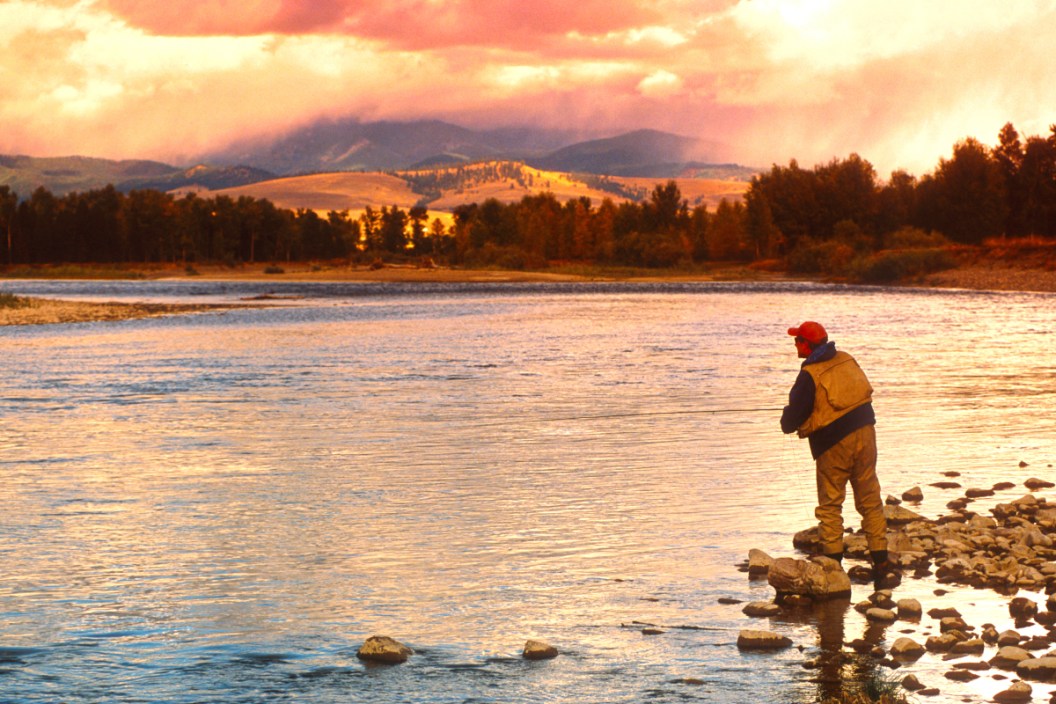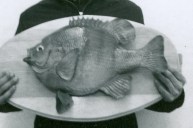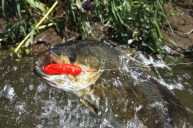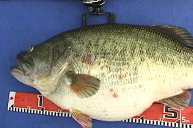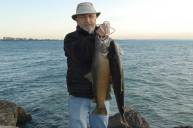These waters just aren't what they used to be.
In the world of fishing, some places are simply timeless as far as being a good place to go after fish. Places like Lake Kissimmee, Lake Fork, or Lake Guntersville just to name a few legendary bass waters across the United States. While most lakes tend to stand the test of time and are as good today as they were when your grandfather fished them. Some places, like Cascade Lake in Idaho, or Castaic Lake in California have come into their own thanks to good management in just the last twenty to thirty years.
Other famous waters simply have not favored quite as well against the test of time. In some cases, access to some lakes has been cut off completely either by the land around it changing hands, or due to some other unforeseen circumstances like pollution or over-harvesting of fish.
Such is the case of the waters we're looking at today. At least two of these waters produced freshwater fish world records that are still standing decades after the fact. Unfortunately, one is completely inaccessible and the other just isn't talked about anymore. It seems that some waters simply aren't what they used to be, often through no fault of their own either. It's usually some extenuating external factors that's causing issues for these waters. Let's have a look at some previously famous waters that have since seen their reputation go downhill a bit.
The Snake River Basin, Washington, and Idaho
Historically, this river has been home to chinook, coho, and sockeye salmon as well as white sturgeon and steelhead. Before European settlers arrived, Native Americans depended on the salmon runs in the river for thousands of years for food. In recent years it's been a popular fly fishing destination. However, there's no doubt the river has lost a step in more recent years.
The fishing has steadily gone downhill thanks to many contributing factors. Dam construction and pollution from agriculture have both made it harder for the spawning fish to return, and have in turn, affected the fishing. To the point that a study by a student from the University of Idaho showed that anglers are more likely to catch a fish reared in a hatchery than a wild one. That's never a good sign.
The last few years have been marked with closures on fishing and talks of reducing bag limits for steelhead just to give the river a chance to return. It doesn't help when one of the hatcheries on the river recently lost 250,000 smolts that may have escaped into the river prematurely where they may have been picked off by other predators. It's going to take a lot of hard work, and probably some sacrifice on the part of anglers for this river to return to its former glory.
Montgomery Lake, Georgia
Those up on their fishing history will recognize this location as the place where in 1932, George Perry caught the world record largemouth bass weighing 22 pounds, 4 ounces that is still tied with a bass caught in Japan for the current number one spot in the International Game Fish Association record books. It's interesting that Montgomery Lake never gained a ton of fame after the fact it produced such a large fish. In fact, if you start searching the Internet, you will struggle to find examples of people fishing it here in the 21st century. Mostly because the lake, which is an oxbox lake formed out of the Ocmulgee River, seems to be mostly a stagnant mudhole these days.
In fact, in the nearly eight decades since Perry caught his fish, it seems the river has changed course slightly and Montgomery Lake is much shallower than it once was. In fact, we've heard it even dries up completely from time to time. Allegedly, in the 1930s, the lake was fed through regular flooding by Ocmulgee River. Perhaps Perry's bass wandered in from the larger river? It seems likely. Although it seems the lake rarely floods over these days.
Because oxbow lakes are essentially sections of river that have become cut off from the main flow, it's not uncommon for these bodies of water to eventually dry up, and that seems to be the case with Montgomery Lake. Because for all the history of the spot, you don't see anyone clamoring to go there these days. In fact, according to Explore Georgia, you can't even put a boat in it anymore like Perry did. Any modern angling must be done from the banks.
Ketona Lake, Alabama
The one falls into the un-accessible category. The thing about this lake is that it produced not one, but TWO world record bluegills three years apart! The first one was caught in 1947 when an angler named Coke McKenzie landed a monstrous, 4-pound 10-ounce bluegill out of the lake. Odds are that fish would still be the world record had McKenzie not waited 20 hours to weigh it. Either way, it re-defined how big a bluegill could grow since the world record at that time was only about two pounds.
Fast-forward to 1950 when T.S. Hudson went out for a little fishing on Easter Sunday and ended up catching a 4-pound 12-ounce bluegill that still stands as the record to this day. There are plenty of other stories floating around the Internet from old-timers who fished this lake and claimed three pounders were common in its waters.
These days, the lake is off-limits because it and the woods surrounding it are privately owned by a company. Although it seems that local teenagers regularly trespass to fish and swim in the quarry. In any case, we do not advocate going there and trying your luck for a big bluegill without trying to get permission first, and it sounds like that would be hard to come by these days.
Homosassa, Florida
You can still find tarpon in the waters around Homosassa, but if you start talking to the old-timers, you'll find out this place just is a shell of what it once was. In the 70s and 80s, Homosassa was considered THE place to go for big tarpon. In fact, many speculated that it was only a matter of time before someone caught a new IGFA world record there. A fascinating piece from amisun.com interviewed angler Tom Evans, who said: "Homosassa gave me the best fishing I've ever experienced, and recently, the worst fishing I've ever seen."
It used to be, every May, tarpon would stage up in the waters around Homosassa before spawning and the bite was fast and furious. Many anglers would catch hundreds of tarpons every year Many of these catches were big fish over 100 pounds. Thus, the speculation that the next world record would come from Homosassa. However, in the late 80s and mid-90s, the tarpon started to taper off slowly. No one is exactly sure why either.
Some have speculated the rush of attention the area received in the 70s and 80s may have forced the fish out. However, Patagonia reports development of the Homosassa area may be the biggest culprit here. As new homes were built in the area, fresh water that once flowed out into the bay area was diverted to homes and businesses instead. Many crabs used to mate in the areas where freshwater flowed into Homosassa Bay. These crabs were then in turn, eaten by the tarpon. Once that freshwater was diverted, the crab population dropped, and so too, did the fishing. While we've heard you can still find tarpon there before the spawn every year, they have become notoriously difficult to catch.
Southwest Montana's trout rivers.
This one has officials with Montana Fish, Wildlife and Parks understandably concerned. Because trout populations are severely declining in places like the Big Hole, Clark Fork, Jefferson, Ruby, and Beaverhead Rivers, and no one knows why. The Montana Standard reported in May 2021 that when biologists did surveys of the Big Hole River, they recorded their lowest brown trout counts in 50 years.
Similar surveys have also shown numbers of the popular game fish are dropping precipitously. What's even more worrying is the survival rates of juvenile trout have gone down too. Because it's happening across multiple rivers, biologists believe there must be some larger factor in play here, likely climate change.
The area has seen a steady increase in fishing pressure. It's a top fly fishing destination, but because most anglers are catch and release, biologists don't believe that's a factor. Whatever the case may be, the Montana FWP is concerned enough that fishing closures went into effect on several rivers. It will be interesting to see what happens in 2022, but the issues with the brown trout are enough for these waters to earn a spot on our list.
For more outdoor content from Travis Smola, be sure to follow him on Twitter and check out his Geocaching and Outdoors with Travis YouTube channels.
NEXT: 4 U.S. FISHING SPOTS YOU HAVEN'T VISITED YET, BUT SHOULD
WATCH
